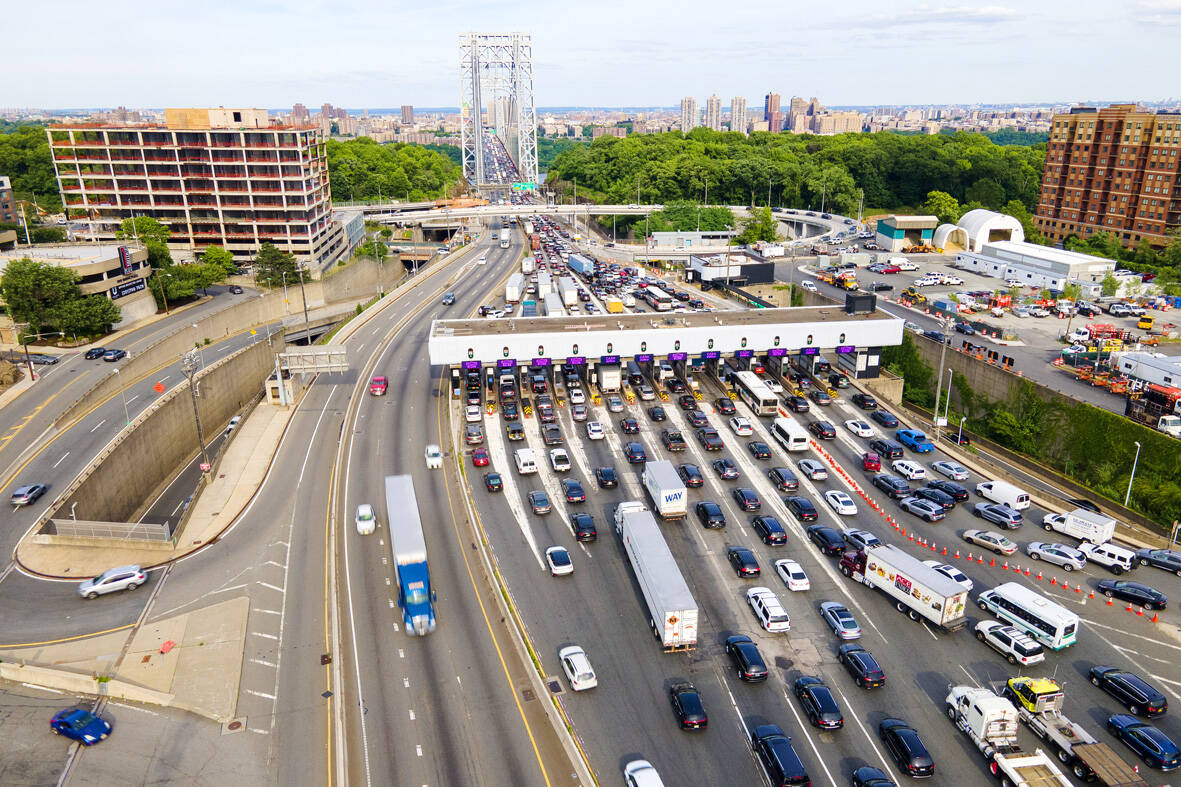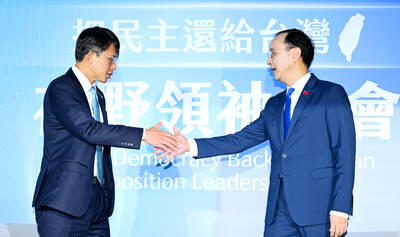People who work remotely all the time produce less than half the greenhouse gas emissions of office workers, according to a new study.
Employees in the US who worked from home all the time were predicted to reduce their emissions by 54 percent, compared with workers in an office, the study found. But hybrid workers did not reduce their emissions so dramatically, according to the research published in the Proceedings of the National Academy of Sciences.
One day of remote work a week reduced emissions by just 2 percent because energy savings from not being in the office were offset by factors such as an increase in non-commuting travel when working from home. Working remotely two or four days a week reduced an individual’s emissions by up to 29 percent compared with on-site workers.

Photo: AP
Researchers from Cornell University and Microsoft used multiple datasets including Microsoft’s own employee data on commuting and teleworking behaviors to model the predicted greenhouse gas emissions of office workers, remote workers and hybrid workers in the US, examining five categories of emissions including office and residential energy use.
They found that IT and communications technology had a negligible impact on individuals’ work carbon footprints.
The main causes of remote workers’ reduced emissions were less office energy use, as well as fewer emissions from a daily commute.
Wider emissions reducing benefits of working from home include the easing of vehicle congestion during rush hour in commuting areas, which is likely to improve fuel economy. But the authors warned that working from home needed to be carefully planned to deliver emissions saving benefits.
“People say: ‘I work from home, I’m net zero.’ That’s not true,” said the co-author
Fengqi You of Cornell University.
The net benefit for working remotely is positive but a key question is how positive.
“When people work remotely, they tend to spend more emissions on social activities,” You said.
The study found that remote workers’ non-work travel increased, with more driving and more flying. You said that homes were not always optimized for decarbonization, in terms of using renewable energy and the efficiency of appliances, and there were some scale-related energy savings. For instance, a small home printer is likely to be less energy efficient than an office printer.
The COVID-19 pandemic created a remote working revolution for many office workers. In the US and elsewhere, many people relocated from “high-density commuting zones” — relatively close to major cities and offices — to more rural “low-density commuting zones.” According to the study, this could result in longer commuting distances for hybrid workers and a greater carbon footprint due to the increased use of private vehicles.
“While remote work shows potential in reducing carbon footprint, careful consideration of commuting patterns, building energy consumption, vehicle ownership, and non-commute-related travel is essential to fully realize its environmental benefits,” the authors said.
While the findings do not apply to workers in many sectors — a bus driver, for example, cannot work from home — it provides pointers on how office-based employers can reduce company emissions.
You said that while the findings were specific to the US, the modeling and trends were likely to be replicated in Europe and Japan. He called on companies to look at energy efficiency measures, downsizing and sharing office space.
“By sharing office space we reduce capacity and size and reduce our office energy consumption,” he said.
The study found that IT and communications accounted for a small percentage of overall emissions and therefore emissions reduction should focus on renewables for office heating and cooling, as well as decarbonizing commuting.

June 2 to June 8 Taiwan’s woodcutters believe that if they see even one speck of red in their cooked rice, no matter how small, an accident is going to happen. Peng Chin-tian (彭錦田) swears that this has proven to be true at every stop during his decades-long career in the logging industry. Along with mining, timber harvesting was once considered the most dangerous profession in Taiwan. Not only were mishaps common during all stages of processing, it was difficult to transport the injured to get medical treatment. Many died during the arduous journey. Peng recounts some of his accidents in

“Why does Taiwan identity decline?”a group of researchers lead by University of Nevada political scientist Austin Wang (王宏恩) asked in a recent paper. After all, it is not difficult to explain the rise in Taiwanese identity after the early 1990s. But no model predicted its decline during the 2016-2018 period, they say. After testing various alternative explanations, Wang et al argue that the fall-off in Taiwanese identity during that period is related to voter hedging based on the performance of the Democratic Progressive Party (DPP). Since the DPP is perceived as the guardian of Taiwan identity, when it performs well,

A short walk beneath the dense Amazon canopy, the forest abruptly opens up. Fallen logs are rotting, the trees grow sparser and the temperature rises in places sunlight hits the ground. This is what 24 years of severe drought looks like in the world’s largest rainforest. But this patch of degraded forest, about the size of a soccer field, is a scientific experiment. Launched in 2000 by Brazilian and British scientists, Esecaflor — short for “Forest Drought Study Project” in Portuguese — set out to simulate a future in which the changing climate could deplete the Amazon of rainfall. It is

What does the Taiwan People’s Party (TPP) in the Huang Kuo-chang (黃國昌) era stand for? What sets it apart from their allies, the Chinese Nationalist Party (KMT)? With some shifts in tone and emphasis, the KMT’s stances have not changed significantly since the late 2000s and the era of former president Ma Ying-jeou (馬英九). The Democratic Progressive Party’s (DPP) current platform formed in the mid-2010s under the guidance of Tsai Ing-wen (蔡英文), and current President William Lai (賴清德) campaigned on continuity. Though their ideological stances may be a bit stale, they have the advantage of being broadly understood by the voters.